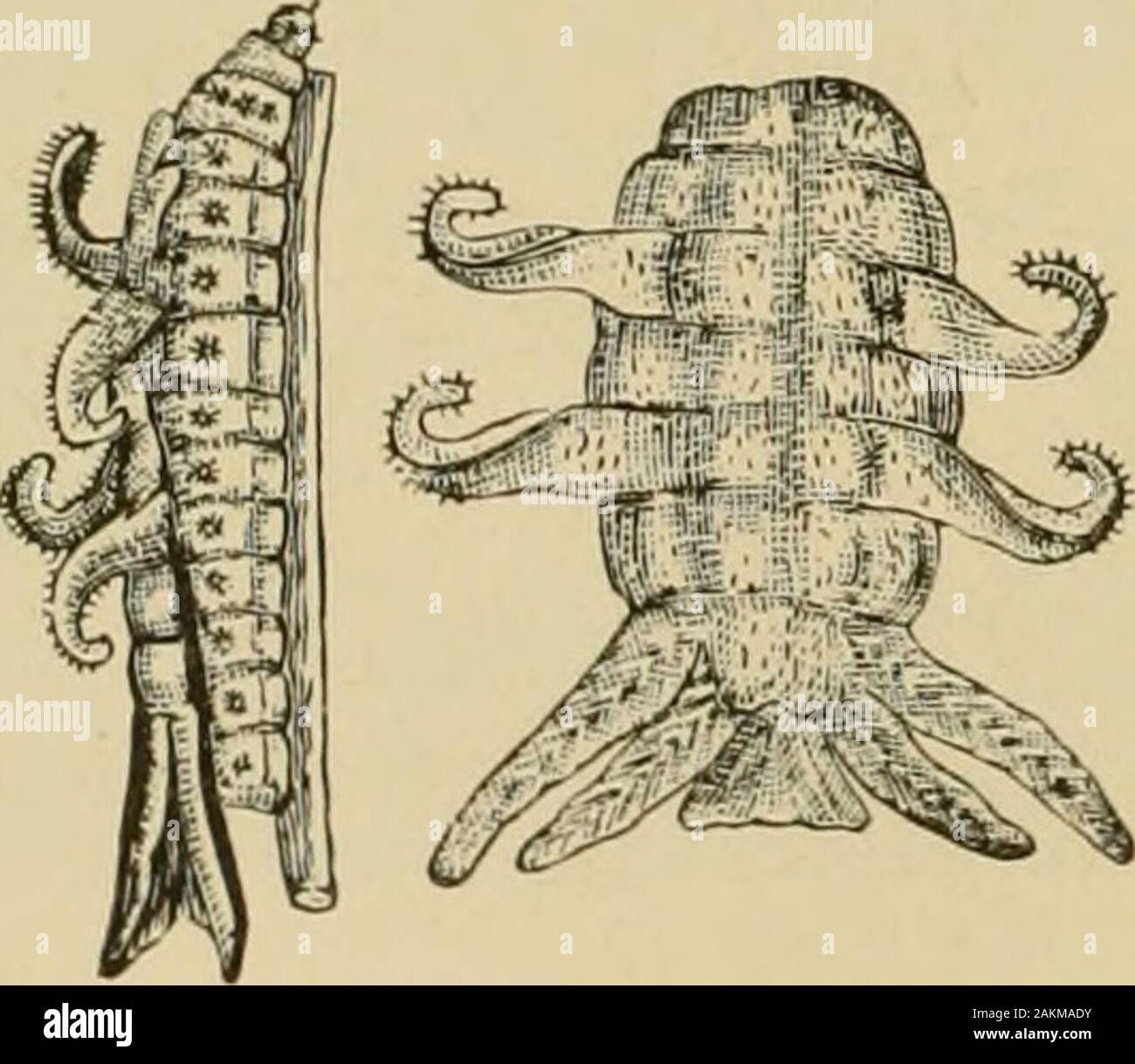Insects injurious to fruits . sto a chrysalis, in which condition it re-mains about ten days, when the mothescapes. This insect, when very abun-dant, devours the leaves of almost everyvariety of tree, bush, and shrub. Where abundant, they may be poisoned, and the orchardprotected, by syringing the trees with Paris-green and water,in the proportion of a teaspoonful of the poison to two gallonsof water. No. 48.—The Hag-Moth Caterpillar.Phobetron pithecium (Sm. & Abb.). The caterpillar of this moth is a curious, slug-like creature,of a dark-brown color, flattened, oblong, or nearly square inform,

Image details
Contributor:
The Reading Room / Alamy Stock PhotoImage ID:
2AKMADYFile size:
7.1 MB (261.3 KB Compressed download)Releases:
Model - no | Property - noDo I need a release?Dimensions:
1696 x 1473 px | 28.7 x 24.9 cm | 11.3 x 9.8 inches | 150dpiMore information:
This image is a public domain image, which means either that copyright has expired in the image or the copyright holder has waived their copyright. Alamy charges you a fee for access to the high resolution copy of the image.
This image could have imperfections as it’s either historical or reportage.
Insects injurious to fruits . sto a chrysalis, in which condition it re-mains about ten days, when the mothescapes. This insect, when very abun-dant, devours the leaves of almost everyvariety of tree, bush, and shrub. Where abundant, they may be poisoned, and the orchardprotected, by syringing the trees with Paris-green and water, in the proportion of a teaspoonful of the poison to two gallonsof water. No. 48.—The Hag-Moth Caterpillar.Phobetron pithecium (Sm. & Abb.). The caterpillar of this moth is a curious, slug-like creature, of a dark-brown color, flattened, oblong, or nearly square inform, with singular, fleshy append-ages protrnding from the sides ofits body. The three middle ones arelongest, measuring about half aninch long, and have their endscnrved. When this larva is handled, the fleshy horns become detached, and when spinning its cocoon itdetaches them and fastens them tothe outside. Fig. Ill gives a side view as well as a back viewof this larva. It feeds on the cherry as well as the apple. Fig. 111.. ATTACKING THE LEAVES. 113 The cocoon is small, round, and compact, usually fastenedto a limb or twig of the tree on which the larva has fed. The moth escapes in about ten days. It is of a dusky-brown color, the front wings variegated with pale yellowishbrown, and crossed by a narrow, wavy, curved band of thesame color, edged near the outer margin with dark brown, andhaving near the middle a light-brown spot. When its wingsare expanded, it measures from an inch to an inch and aquarter across. It is an insect which has always hithertobeen rare, and is never likely to do much injury. 51 No. 49.—The Saddle-back Caterpillar. Empretia stimulea Clemens. This caterpillar, which is represented in Fig. 112, a, a back view, 6, a side view, is often found feeding on apple-leaves, also on those of the cherry, , -^ Fig. 112. grape, raspberry, currant, rose, alth8ea, Indian corn, andsumach. It is of a reddish-brown color, rounded above, flattened beneath, armedwith prickly